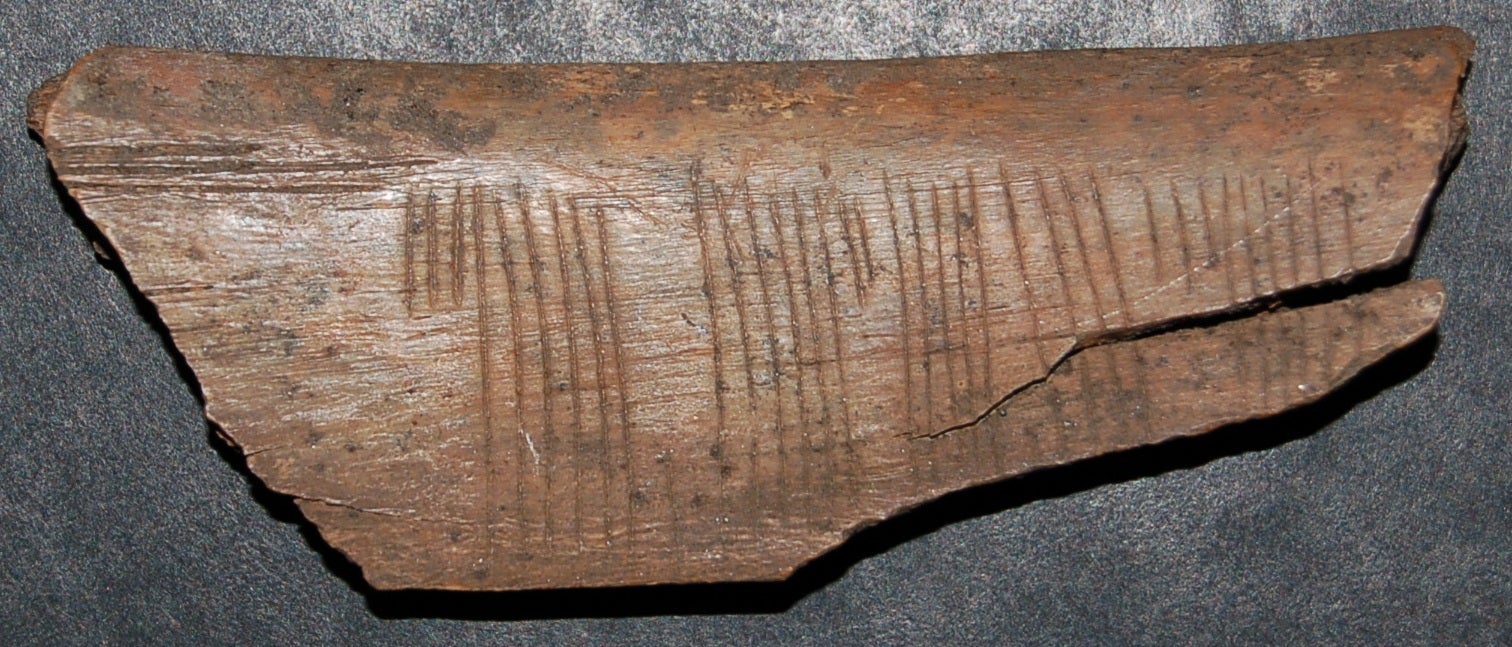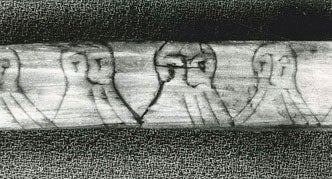Mysterious 900-year-old Viking code deciphered to reveal 'Kiss me' love message
The jötunvillur code has baffled experts for years as one of the many ciphers that were used to exchange love notes and boasts

A 900 year-old runic code used by ancient Vikings has been cracked for the first time, revealing a simple message:‘Kiss me!’.
K Jonas Nordby, a runeologist from the University of Oslo, was able to crack the puzzle of the jötunvillur code after he noticed that two individuals had signed their names on a piece of wood both in code and in the regular runic alphabet. He says that the message is typical of the light-hearted use of runes at the time.
“The code gives many possible readings when deciphered and so cannot have been used for ordinary communication,” Nordby told The Independent. “Therefore I believe it is a kind of playful writing practice that was used to learn the names of the runes and their sound values.”
Nordby says that the exchange of these brief runic messages was a common part of Scandinavian Viking and Medieval society, and that the missives - carved mostly into wood and bone – could be used for anything from love-notes to receipts.
Runes are not a language, but an Old Germanic alphabet that is thought to have been developed some time in the first century CE. Although only nine examples of the jötunvillur code have been found, Nordby says that there are other ciphers that are more common.

“Rune sticks and bone was used for all kinds of everyday messages and writing practice,” says Nordby, “And there are lots of ordinary runic inscriptions from the 1100s to 1300s with romantic messages. One examples reads: ‘So much do I love another man’s woman that the wide mountains shiver. Wonderful ring-woman! We love each other so much that the earth explodes!’”
Sometimes, the playfulness of these codes even strayed into the pictorial, with the vertical ‘staves’ and diagonal ‘branches’ of the runic alphabet woven into doodles including faces with beards and the fins of fish.
Runes were used across Northern Europe including England until around 1000 (the use continued in Scandinavia until the 15th Century) and there was obviously some prestige associated with their use. One example from the Orkney Islands reads more like a piece of graffiti, boasting “These runes were carved by the most rune-literate man west of the sea”.
Nordby’s work has been enthusiastically received by the academic community, with Henrik Williams, an expert on runes from Uppsala University, hailing the discovery as “pure detective work”.
“Above all, it helps us understand that there were more codes than we were aware of. Each runic inscription we interpret raises our hopes of soon being able to read more,” he told Science Nordic.
Williams also agrees that in the case of the jötunvillur code it’s likely that the runes were being used as part of the learning process. “They challenged the reader, demonstrated skills, and testify to a joy in reading and writing,” he said. “But personally I think jötunvillur is an idiotic code, because whoever made it chose a system that is so hard to interpret.”
Join our commenting forum
Join thought-provoking conversations, follow other Independent readers and see their replies
Comments